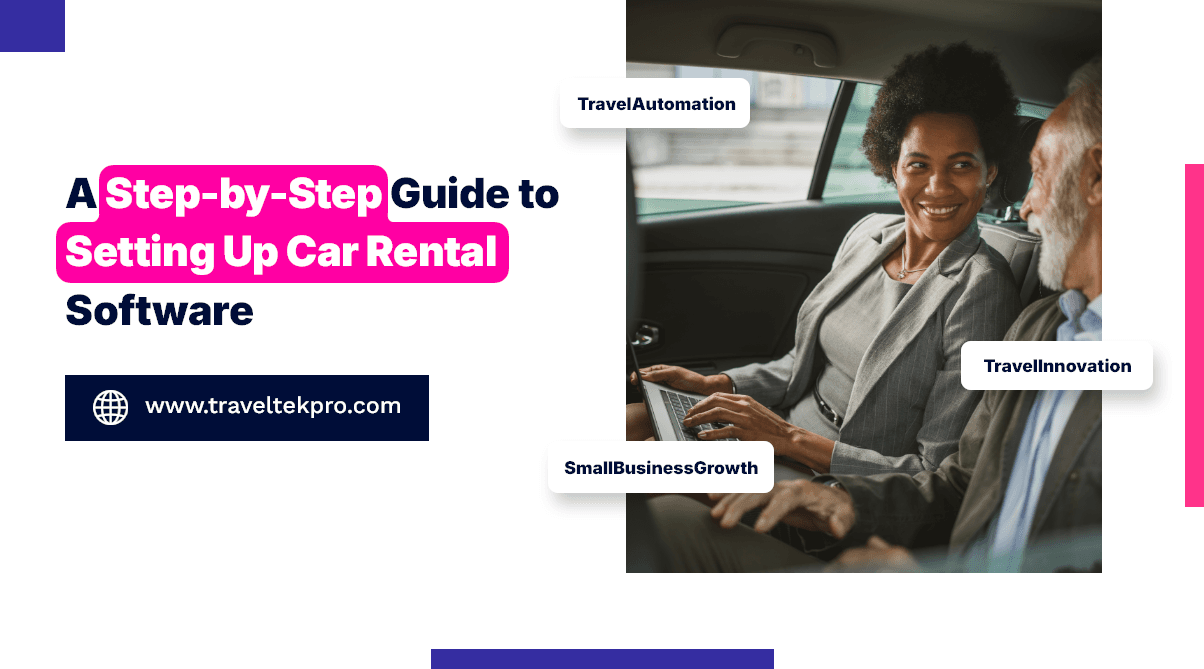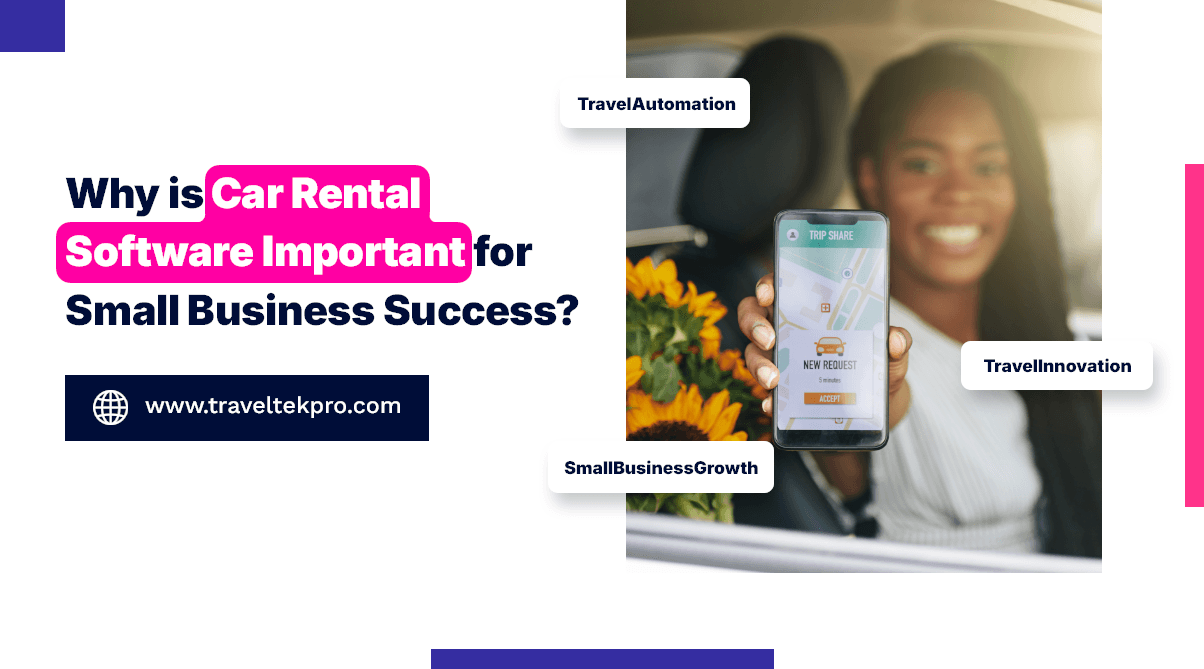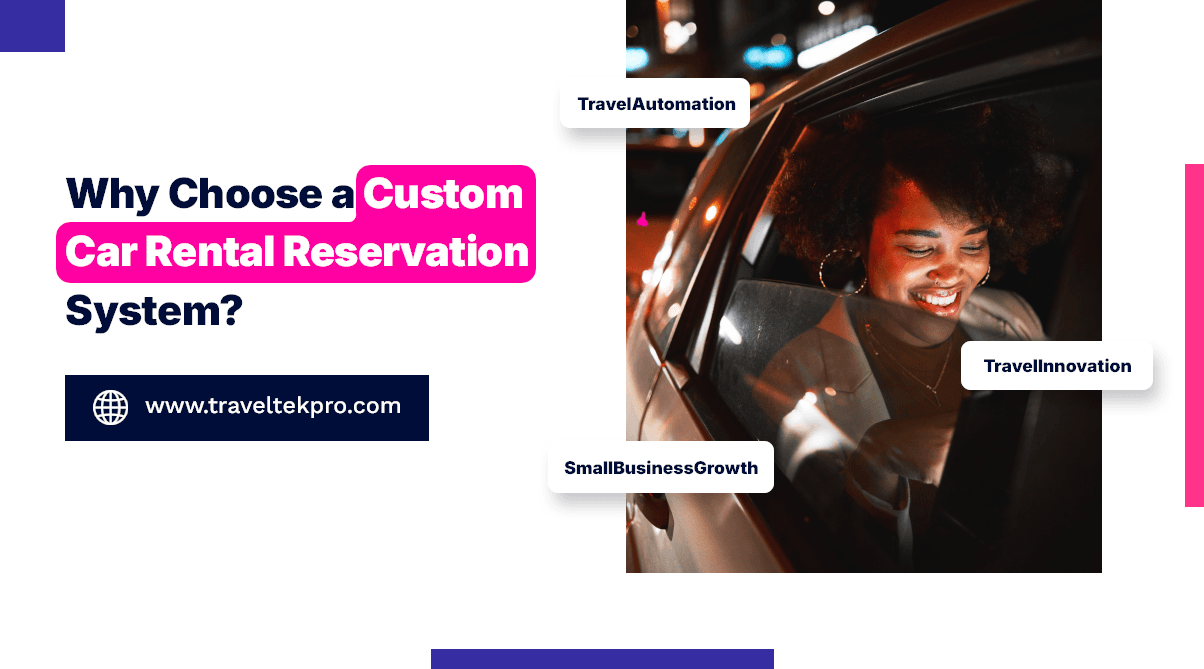A Step-by-Step Guide to Setting Up Car Rental Software
Running a car rental business includes juggling numerous tasks, managing bookings, tracking vehicles, handling payments and ensuring customer satisfaction. Transitioning from manual process to automated solutions can greatly improve efficiency, improve the customer experience and also simplify management. In this guide you can learn everything about a step-by-step road map to successfully setting up your Car Rental Reservation System.
Step 1 laying the groundwork
Before diving into Car Rental Booking Software, it’s very important for you to understand your specific requirements. Identify the challenges you are facing, issues like double bookings or insufficient booking. Determine which features are non-negotiable for your operations online booking or fleet management. Next you also need to establish a clear budget for your Car Rental Software. You must know the number of vehicles you managed to ensure scalability.
With your needs outlined you can start researching software options. Ensure the software you choose addresses your identified challenges. Evaluation criteria must include user friendliness, scalability , deployment integrations, and customer support pricing models. You can even request demonstrations and compare features across top contenders. Don’t forget to seek feedback from other users to understand reliability and performance.
Prepare the important information for a smooth transition. Vehicle details like model year license plate and fuel type rental rates are very important. Customer information like names, contact information details should be present. Pricing structure must be bifurcated perfectly like daily hourly weekly rates or seasonal rising and extra charges. Don’t forget to add rental agreement clauses, policies and terms and conditions.
Step 2 core configuration bringing your business online
Now it’s time to set up your primary administrative account with secure login credentials. You can define roles for your staff managers, dispatchers, counter agents and assign appropriate permissions on the Car Rental Reservation System.
Now you need to configure your fleet inventory by entering all the vehicle information into the software. Upload quality images of each vehicle to improve customer information. categorize vehicles into different groups like economy SUV luxury for easier navigation. Lastly you need to set up alerts for regular service and inspections.
Define your pricing structure and rents. Include standard rates for each vehicle or category. Set minimum and maximum rental duration. Configure seasonal rates and promotional offers. Include optional extras like child seats and insurance. Establish Limits and associate fees for excessive mileage.
Integrate payment gateways with platforms like PayPal to facilitate online payments. Define deposit requirements, full payment policies and refund procedures.
Step 3 customization and refinement
Customize your booking form and website integration. Embed the booking widget or API on your existing website and ensure that the booking form is completely simple and straightforward. Furthermore, you need to align the Car Rental Booking Software with your existing brands logo colors and style.
Configure automatic emails for bookings, confirmations, reminders and cancellations. You can even customize email content to reflect your brand’s voice and provide a personal touch.
Digital agreements should be uploaded for electronic signing. You must ensure the system supports secure and legally binding digital signatures.
Learn to navigate available reporting tools. Set up specific reports to monitor your revenue vehicle utilization and customer demographics.
Step 4 testing and launch go live with confidence
End to end testing is where you simulate the entire booking process from reservation to payment to confirmation. You can test various scenarios including short and long rentals add-ons and cancellations on Car Rental Software. Furthermore you also need to ensure that the staff can effectively manage check ins and checkouts besides vehicle status updates.
Provide detailed training sessions for all your team members and ensure that the staff is comfortable with all the parts of the software from booking management to maintenance tracking.
You need to introduce your Car Rental Reservation System to a select group of customers. Gather insights and make some adjustments based on your user experiences.
Once you succeed with a small batch you can inform your customer pays about the new booking system through emails, social media and your website. Just update brochures, business cards and other materials to reflect your new system. Always you need to keep a close eye on system performance and customer feedback post-launch.
Read More: Why Is Car Rental Software Important for Small Business Success?
Post launch optimization
After your system goes live closely observe how your customers and staff interact with the software. Identify which vehicles are booked most often during peak seasons and preferred rental durations. Also, you need to monitor where users exit the booking process and address some friction points. Also ask for customer opinions through post rental surveys or e-mail feedback.
You can use all these insights from analytics to refine the booking experience or shorten the process based on user feedback. If certain vehicles are high in demand, consider dynamic pricing or introducing premium packages. Streamline your terms and conditions to reflect your operational realities and customer preferences.
Ensuring security and compliance
Handling customer information means being responsible for privacy. Ensure that your system complies with GDPR if applicable. Depending on your location, you might even need to follow specific laws around storing and using personal information. Always add an extra layer of login security for admins and staff.
You must ensure sensitive information like customer details and payment information is encrypted. Schedule automated backups to avoid data loss in the event of any system failure or cyber-attack. You must allow the customers to upload or access insurance documents digitally. Enable digital filing of any accidents for streamlined resolution.
Integrating GPS and telematics for fleet monitoring
With real time tracking you can know where each vehicle is at all times improving both security and customer service. You can even set location boundaries to prevent unauthorized vehicle usage.
Modern car rental software can integrate with telematics systems to monitor check engine lights, tire pressure, battery health and much more. Prevent breakdowns by identifying potential issues before they just happen.
Customer relationship management and loyalty programs
A centralized customer profile stores histories like booking history, payment records and preference and feedback. This allows you to offer a more customized service and targeted marketing. Some of the best CRM features to consider include automated birthdays, targeted promotions or loyalty tier system.
Multi location management
As your business grows to multiple locations you must have a central dashboard that will help you view and manage operations across all locations from a unified platform. You can even customize pricing fleets or policies based on regional factors. If you are expanding through partners or franchisees, ensure that your software supports custom access levels, individuals reporting for each franchise and brand consistency across all branches.
So above all you need to know that implementing Car Rental Booking Software from Traveltekpro is a transformative step for your business. It streamlines operations to improve customer satisfaction and positions your company for scalable growth. No doubt the setup process requires careful planning but the long-term benefits truly outweigh the initial efforts. By following all the steps here, you are on your way to modernizing your car rental business and staying competitive in their digital marketplace.
Read More: How Does a Travel Booking Engine Improve Customer Experience?
FAQ’s
1. What is car rental software and why do I need it for my business?
Car rental software, also known as a Car Rental Reservation System (CRSS), is a comprehensive digital solution that automates and manages all aspects of vehicle rental operations. This web-based application eliminates the need for manual processes by handling bookings, fleet management, customer relationships, payment processing, and operational reporting from a single unified platform. The software addresses critical business challenges including double bookings, insufficient inventory tracking, manual payment processing, and poor customer communication that plague traditional rental operations. Modern car rental businesses require these systems because they significantly improve operational efficiency, reduce administrative overhead, enhance customer satisfaction through seamless booking experiences, and provide valuable analytics for data-driven decision making. Additionally, the software enables real-time fleet monitoring, automated maintenance scheduling, dynamic pricing capabilities, and integration with multiple sales channels including online travel agencies and global distribution systems, positioning rental companies to compete effectively in today’s digital marketplace.
2. How much does car rental software cost and what payment options are available?
The cost of car rental software varies significantly based on business size, fleet volume, and required functionality, with subscription fees typically determined by usage patterns and specific operational needs. Most reputable providers offer flexible pricing models that scale with your business growth, eliminating the need for large upfront investments and allowing companies to start with basic packages before expanding to enterprise-level solutions. Payment options generally include major credit cards such as Visa, MasterCard, and American Express, with many providers offering annual subscription discounts for businesses willing to commit to longer-term contracts. It’s important to establish a clear budget during the planning phase, considering not only the software subscription but also implementation costs, staff training, and potential customization requirements. Many providers offer free trials lasting seven days or more, allowing businesses to test full functionality without credit card requirements, and most operate without long-term contracts, enabling cancellation at any time without penalty. To obtain accurate pricing for your specific needs, it’s recommended to contact providers directly with details about your fleet size, expected transaction volume, and required integrations.
3. Can I integrate car rental software with my existing website and systems?
Yes, modern car rental software is designed with robust integration capabilities that allow seamless connection with existing websites, payment systems, and business applications. The integration process typically involves embedding booking widgets or APIs directly into your current website, ensuring that customers can make reservations without leaving your domain while maintaining consistent branding through customizable colors, logos, and styling. Payment gateway integrations with popular platforms like PayPal, Stripe, and Braintree enable secure online transactions, while the software can connect with Global Distribution Systems (GDSs), Online Travel Agencies (OTAs), and travel consolidators to expand your distribution channels. Additionally, the software supports integration with telematics systems for real-time vehicle tracking, maintenance management systems for automated service scheduling, and CRM platforms for enhanced customer relationship management. The booking engine seamlessly transfers reservation details to fleet management modules, inputs customer information into CRM systems, and coordinates with task management modules to ensure proper vehicle preparation. Most implementations require minimal technical expertise, as reputable providers offer comprehensive support during the integration process and provide detailed documentation for common scenarios.
4. How long does it take to implement car rental software and what’s involved in the setup process?
Implementing car rental software typically follows a structured four-step process that can take anywhere from a few weeks to several months, depending on business complexity and customization requirements. The implementation begins with groundwork preparation, where businesses identify specific challenges, establish budgets, research software options, and gather essential data including vehicle details, customer information, pricing structures, and rental policies. The core configuration phase involves setting up administrative accounts, defining user roles and permissions, configuring fleet inventory with vehicle categorization and maintenance alerts, establishing pricing structures with seasonal rates and promotional offers, and integrating payment gateways. Customization and refinement activities include website integration, automated email configuration, digital agreement setup, and reporting tool configuration to align with brand identity and operational requirements. The final testing and launch phase requires comprehensive end-to-end testing of all booking scenarios, staff training sessions, pilot launches with select customers, and ongoing performance monitoring post-launch. Throughout this process, businesses receive unlimited technical support from professional development teams, ensuring smooth implementation and addressing any challenges that arise during setup. Success depends heavily on thorough preparation, clear requirement definition, and commitment to staff training and system adoption.
5. What features should I look for in car rental software to maximize my business efficiency?
Essential car rental software features should encompass comprehensive booking management, robust fleet operations, integrated customer relationship management, and advanced analytics capabilities. The booking engine must provide real-time inventory availability, dynamic pricing capabilities, multiple payment gateway integrations, automated confirmation emails, and seamless website integration to ensure smooth customer experiences. Fleet management functionality should include vehicle categorization, maintenance scheduling with automated alerts, GPS tracking and telematics integration, mileage monitoring, and comprehensive vehicle history tracking. Customer relationship management features must store detailed customer profiles with booking history, preferences, and feedback, enable automated communication campaigns, support digital agreement signing, and facilitate post-rental surveys for continuous improvement. Advanced reporting and analytics tools should provide insights into revenue patterns, vehicle utilization rates, customer demographics, peak booking periods, and operational performance metrics. Multi-location management capabilities become crucial for growing businesses, requiring centralized dashboards, location-specific pricing and policies, and franchise support with customizable access levels. Security features including GDPR compliance, data encryption, automated backups, and multi-factor authentication ensure customer data protection and business continuity. Additional considerations include mobile responsiveness, scalability to accommodate business growth, and comprehensive technical support to address operational challenges.
6. How can car rental software help me grow my business and increase revenue?
Car rental software serves as a powerful growth catalyst by optimizing operations, enhancing customer experiences, and providing data-driven insights that directly impact revenue generation. The system improves revenue through dynamic pricing capabilities that automatically adjust rates based on demand patterns, seasonal fluctuations, and market conditions, while reducing operational costs through automation of manual processes, elimination of double bookings, and optimized fleet utilization. Enhanced customer satisfaction through streamlined booking processes, automated communications, and personalized service leads to increased customer retention, positive reviews, and referral business. Multi-channel distribution integration with OTAs, GDSs, and travel consolidators expands market reach and booking opportunities beyond traditional channels. Advanced analytics provide actionable insights into customer behavior, popular vehicle types, peak booking periods, and pricing optimization opportunities, enabling data-driven business decisions. The software supports business expansion through multi-location management capabilities, franchise support, and scalable architecture that grows with your operations. Automated customer relationship management features enable targeted marketing campaigns, loyalty programs, and personalized promotions that increase customer lifetime value. Real-time fleet monitoring and predictive maintenance reduce downtime, extend vehicle lifecycles, and ensure optimal fleet availability during peak demand periods. By positioning your business as a modern, technology-forward operation, the software helps attract tech-savvy customers and compete effectively against traditional and emerging competitors in the evolving rental market.
Let's Start Your Project
Let us help you achieve your goals, by creating the best solution for you!



